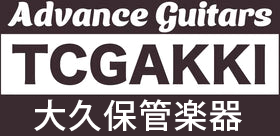Q. How much should a beginner spend on a guitar? (Budget Guide)
A. For your first guitar, the most recommended price range is ¥30,000 to ¥50,000. While you can find ultra-cheap guitars in the ¥10,000 range, they often go out of tune easily or are poorly made, which can hinder your progress. Guitars in the ¥30,000 to ¥50,000 range are well-constructed and will let you play comfortably for a long time. Especially at a used guitar specialist like our store, you can sometimes get a high-quality guitar that would normally cost ¥70,000 to ¥80,000 for a budget of ¥30,000 to ¥50,000.
Q. Is it okay for beginners to choose a "used guitar"?
A. Yes, a professionally adjusted used guitar is actually a "great deal" and "easy to play." Many worry that "used guitars seem to be in poor condition," but TCGAKKI has all used guitars rigorously inspected and professionally set up by our specialist staff upon arrival. New can sometimes be difficult to play if unadjusted, but our used instruments are finished to be "easy to play even for beginners" before being displayed in-store, so you can choose with confidence.
Q. I have small hands. Can I still play guitar?
A. Absolutely no problem. We can recommend models suited to your hand size. Many professional guitarists have small hands. Choosing a model with a slimmer neck or a slightly shorter string length (scale), like a "medium scale" or "short scale" guitar (such as Mustangs or some Les Pauls), can make playing surprisingly easy. If you're unsure, we highly recommend visiting our store to actually grip and compare different necks.
Q. Should I buy a "beginner set" or "individual items"?
A. If you plan to continue playing long-term, we recommend purchasing necessary items "individually." While sets are convenient, the included amp or cable may have lower durability. "Investing more in the guitar itself and choosing a solid, essential amp and accessories" ultimately allows you to practice with better sound and progress faster. We can also propose a starter set tailored to your budget, combining "only what you truly need."
Q. So, is it okay to just choose based on looks?
A. Yes!"Liking the look" is the most important factor. No matter how expensive a guitar is, if playing it doesn't excite you, you won't stick with your practice. That gut feeling – "the color is cool," "I love the shape," "it resembles my favorite artist's" – is incredibly important. Let our staff help you find a guitar that fits your budget and plays well, starting from the ones you're drawn to visually. First, browse our inventory list and see if any one of them gives you that "wow" feeling.
